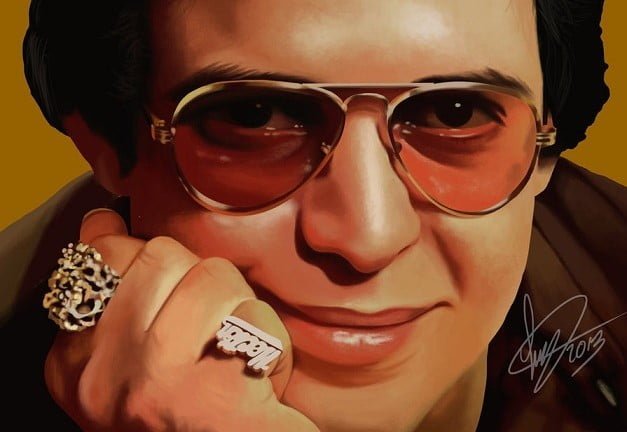Héctor Juan Pérez Martínez, better known as Héctor Lavoe, was a legendary salsa songwriter and singer whose music and charismatic personality left an indelible mark on the world of Latin music. Born on September 30, 1946, in Ponce, Puerto Rico, Lavoe’s journey from humble beginnings to international stardom is a testament to his resilience and passion for music.
Héctor Lavoe’s Early Years and Musical Beginnings:
Raised in a family of limited means, Lavoe’s father, Luis Pérez, instilled in him a love for music from a young age. By the age of 14, Lavoe was performing in his hometown, contributing to the family’s finances. At 16, he ventured to New York with his sister, Priscilla, seeking fame and fortune. Lavoe worked odd jobs while immersing himself in the vibrant Latin music scene of Lower Manhattan and the Bronx.
Collaboration with Willie Colón:
Lavoe’s talent quickly gained recognition, and he collaborated with childhood friend Roberto Garcia, leading him to join bands like Alegre All Stars and Francisco “Kako” Bastar. However, it was with Willie Colón that Lavoe truly made his mark. The duo recorded eleven songs, including hits like “The Great Fugue” and “Our Thing,” before parting ways in 1973.
Solo Career Takes Flight:
In 1975, Lavoe embarked on a solo career with his debut album, “La Voz.” His orchestra, comprised of musicians from his collaboration with Colón, solidified Lavoe’s position as a prominent salsa artist. The release of his second album, “De Ti Depende” in 1976, featured the iconic track “Periódico de Ayer.”
Challenges and Triumphs:
Despite musical success, Lavoe faced personal struggles, including drug addiction and health issues. The 1980s brought hardships, with a tragic apartment fire and a suicide attempt. Diagnosed with AIDS in 1988, Lavoe’s health deteriorated, culminating in a stroke in 1991 that ended his singing career.
Legacy and Recognition:
Héctor Lavoe’s legacy endures through his contributions to salsa music. Known as “The Singer of the Singers,” his 1978 album “La Comedia” produced the iconic track “El Cantante.” Lavoe’s impact on the genre earned him recognition as one of the greatest salsa singers globally.
The Final Years and Passing:
Facing financial exploitation during his last years, Lavoe’s family fought for justice after his death. In 2002, his remains were transferred to his hometown of Ponce, Puerto Rico, fulfilling his final wish. Lavoe’s influence lives on through monuments erected in his honor, solidifying his place as a salsa legend.
FAQ:
1. What is Héctor Lavoe’s most famous song?
Héctor Lavoe’s most famous song is “El Cantante,” a track from his 1978 album “La Comedia.” The song, written by Rubén Blades, encapsulates Lavoe’s life and musical journey.
2. How did Héctor Lavoe’s collaboration with Willie Colón end?
In 1973, Willie Colón decided to separate from Lavoe to focus on musical production and family. Despite initial feelings of betrayal, Lavoe and Colón later reconciled, and Colón continued recording with Lavoe in some of his solo albums.
3. What led to the decline of Héctor Lavoe’s career in the 1980s?
Lavoe faced significant challenges in the 1980s, including a devastating apartment fire, personal losses, and a recurrence of drug addiction. These factors, coupled with health issues, marked a challenging period in Lavoe’s life and career.
Conclusion:
Héctor Lavoe’s life was a rollercoaster of triumphs and tribulations, ultimately leaving an indomitable mark on the world of salsa music. His unique voice, coupled with the emotional depth of his lyrics, continues to resonate, ensuring that “The Singer of the Singers” remains an eternal icon in Latin music history.






Leave a Reply